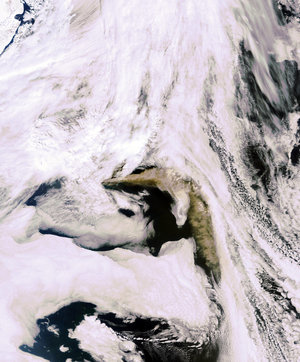Accept all cookies Accept only essential cookies See our Cookie Notice

About ESA
The European Space Agency (ESA) is Europe’s gateway to space. Its mission is to shape the development of Europe’s space capability and ensure that investment in space continues to deliver benefits to the citizens of Europe and the world.
Highlights
ESA - United space in Europe
This is ESA ESA facts Member States & Cooperating States Funding Director General Top management For Member State Delegations European vision European Space Policy ESA & EU Space Councils Responsibility & Sustainability Annual Report Calendar of meetings Corporate newsEstablishments & sites
ESA Headquarters ESA ESTEC ESA ESOC ESA ESRIN ESA EAC ESA ESAC Europe's Spaceport ESA ESEC ESA ECSAT Brussels Office Washington OfficeWorking with ESA
Business with ESA ESA Commercialisation Gateway Law at ESA Careers Cyber resilience at ESA IT at ESA Newsroom Partnerships Merchandising Licence Education Open Space Innovation Platform Integrity and Reporting Administrative Tribunal Health and SafetyMore about ESA
History ESA Historical Archives Exhibitions Publications Art & Culture ESA Merchandise Kids Diversity ESA Brand Centre ESA ChampionsSpace in Member States
Find out more about space activities in our 23 Member States, and understand how ESA works together with their national agencies, institutions and organisations.
Science & Exploration
Exploring our Solar System and unlocking the secrets of the Universe
Go to topicAstronauts
Missions
Juice Euclid Webb Solar Orbiter BepiColombo Gaia ExoMars Cheops Exoplanet missions More missionsActivities
International Space Station Orion service module Gateway Concordia Caves & Pangaea BenefitsLatest
Space Safety
Protecting life and infrastructure on Earth and in orbit
Go to topicAsteroids
Asteroids and Planetary Defence Asteroid danger explained Flyeye telescope: asteroid detection Hera mission: asteroid deflection Near-Earth Object Coordination CentreSpace junk
About space debris Space debris by the numbers Space Environment Report In space refuelling, refurbishing and removingSafety from space
Clean Space ecodesign Zero Debris Technologies Space for Earth Supporting Sustainable DevelopmentLatest
Applications
Using space to benefit citizens and meet future challenges on Earth
Go to topicObserving the Earth
Observing the Earth Future EO Copernicus Meteorology Space for our climate Satellite missionsCommercialisation
ESA Commercialisation Gateway Open Space Innovation Platform Business Incubation ESA Space SolutionsEnabling & Support
Making space accessible and developing the technologies for the future
Go to topicBuilding missions
Space Engineering and Technology Test centre Laboratories Concurrent Design Facility Preparing for the future Shaping the Future Discovery and Preparation Advanced Concepts TeamSpace transportation
Space Transportation Ariane Vega Space Rider Future space transportation Boost! Europe's Spaceport Launches from Europe's Spaceport from 2012
Iceland - MERIS, 23 May 2003
Thank you for liking
You have already liked this page, you can only like it once!
This MEdium Resolution Imaging Spectrometer (MERIS) image shows Iceland. This mountainous island country is situated in the northern Atlantic Ocean, about 200 kilometres southeast of Greenland. Iceland lies on top of a fault in the Earth's crust, which allows underground heat to escape as steam.
Gulf Stream currents flow around the south, west and north coasts, bringing mild, wet weather that warms the coastal lowlands (just one-quarter of the island) being the only inhabitable region of Iceland. Reykjavik, the capital of Iceland, can be seen in the southwest of the island in grey tones. This city is the northernmost national capital in the world. Numerous river plains can be seen in the image along the coastline. The westernmost part of Iceland (top left of the image covered by snow) is a peninsula linked to the rest of the island by an isthmus only 12 kilometres wide at its narrowest point. It features Iceland's most spectacular fjords.
Glaciers cover about one-eighth of the country's surface. The largest, Vatnajokull, is situated on the southeastern edge of the island. In addition to these ice fields, the island is home to over 200 volcanoes, many of which are still active. Volcanic eruptions are frequent and volcanic ash deposits are widespread. Many glaciers of Iceland rest above active volcanoes. Beneath the enormous glacier, the intense geothermal activity continuosly melts the ice to form a sub-glacial lake in the volcano's caldera. The melt waters eventually flood the caldera, and pour out from underneath the glacier.
Technical Information:
Instrument: MEdium Resolution Imaging Spectrometer (MERIS)
Date of Acquisition: 23 May 2003
Orbit number: 06419
Orbit direction: Descending
Instrument features: Full Resolution image (300 metre resolution)
Band combination: R = 665 nm, G = 560 nm, B = 442.5 nm
-
CREDIT
ESA 2003 -
LICENCE
ESA Standard Licence and Additional permission may be required
(contact spaceinimages@esa.int for further information)

Envisat looks at Iceland

A smoke-free Iceland

Cloud-free image of Iceland

Vatnajökull















 Germany
Germany
 Austria
Austria
 Belgium
Belgium
 Denmark
Denmark
 Spain
Spain
 Estonia
Estonia
 Finland
Finland
 France
France
 Greece
Greece
 Hungary
Hungary
 Ireland
Ireland
 Italy
Italy
 Luxembourg
Luxembourg
 Norway
Norway
 The Netherlands
The Netherlands
 Poland
Poland
 Portugal
Portugal
 Czechia
Czechia
 Romania
Romania
 United Kingdom
United Kingdom
 Slovenia
Slovenia
 Sweden
Sweden
 Switzerland
Switzerland
























